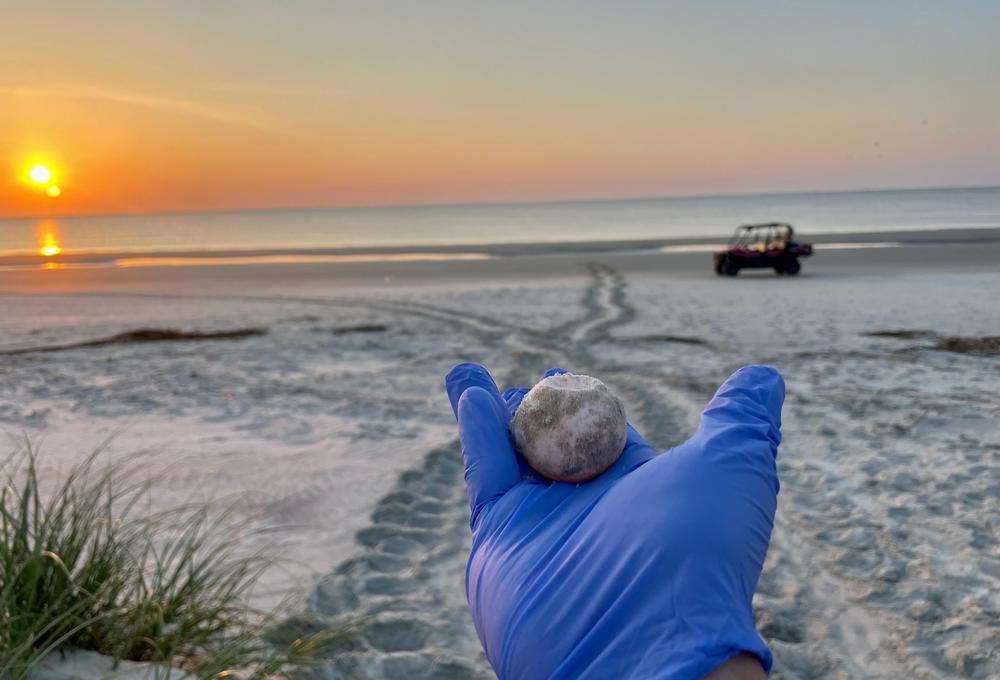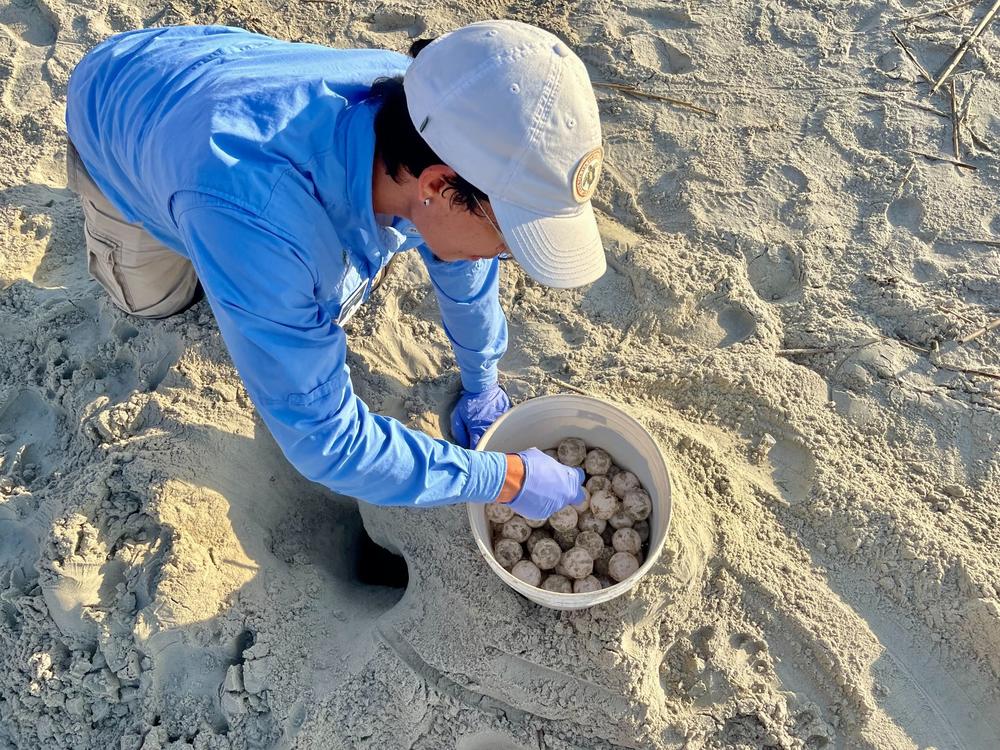
Caption
The Georgia Sea Turtle Center research team on May 5 encountered a Loggerhead sea turtle crawl on their morning patrol and confirmed the first nest of 2022 in Jekyll Island.
Credit: Georgia Sea Turtle Center Facebook page
Rare loggerhead sea turtles are busy digging nests and laying eggs on beaches in Georgia and South Carolina.
Wildlife officials in both states have reported finding dozens of nests since May 1, considered the unofficial start of the sea turtle nesting season.
Loggerhead sea turtles, which grow to weigh as much as 375 pounds (170 kilograms) are protected under federal law as a threatened species.
Each spring and summer, female turtles crawl from the Atlantic ocean to lay their eggs on beaches from North Carolina to Florida. Wildlife officials and volunteers scout the beaches daily looking for new nests filled with eggs the size of ping-pong balls.

The Georgia Sea Turtle Center research team on May 5 encountered a Loggerhead sea turtle crawl on their morning patrol and confirmed the first nest of 2022 in Jekyll Island.
"During the day we're checking any nests that are new," Will Hicks, a research technician on Jekyll Island, Georgia, told The Brunswick News. "We're protecting them with protective screens to keep out predators and putting a nesting sign that has general information for us as researchers to know what the nest is."
So far, Georgia wildlife officials have reported more than 50 nests, with more than half found on federally protected Cumberland Island.
In South Carolina, at least 47 loggerhead nests have been spotted. Roughly one-fourth were found in the Edisto Beach area.
"We're excited and optimistic for a great nesting season for sea turtles along our coast," Michelle Pate, the state biologist who leads South Carolina's sea turtle nesting program, said in a news release.

An AmeriCorps Research Member is seen carefully taking eggs out of their original nest. Sometimes, a sea turtle will nest in an area that is not ideal for her egg's survival. This nest was laid where it could be flooded by the tide. The eggs were relocated to a better area to increase their chances of survival.
The sea turtles typically keep digging nests through August. Last year there were nearly 2,500 loggerhead nests recorded in Georgia and more than 5,600 in South Carolina.
WATCH GPB's Georgia Outdoors' Loggerheads: The Epic Journey for a unique encounter that allows us to explore the challenges faced throughout the true circle of life of one of Georgia's treasures, the Loggerhead sea turtle.